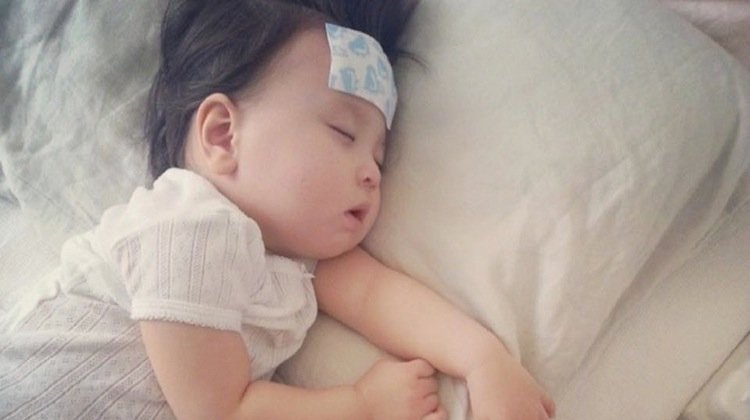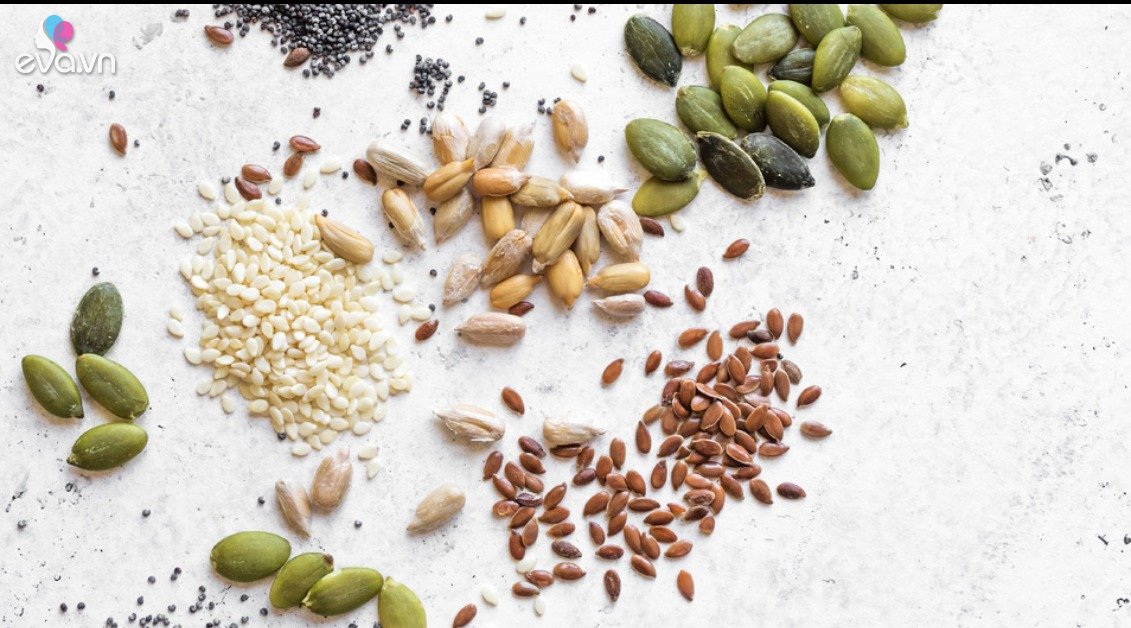Fever in infants in particular and children in general is a condition where the body temperature is higher than usual. At this time, the baby may be tired, anorexic or irritable, cranky. Usually, babies who have a fever will not have a known cause, the high or low temperature does not clearly reflect the severity of the disease. Sometimes, a child with a high fever doesn’t necessarily mean that they are seriously ill.
What to do when baby has a fever? (Illustration)
What is the degree of fever in a newborn?
Fever is one of the body’s responses to the invasion of pathogenic bacteria and viruses. Usually a newborn baby is said to have a fever if the temperature (measured from the front ear and forehead) is more than 38 degrees Celsius, but mothers need to pay attention, just because the baby’s body is hotter than usual does not mean the newborn will have a fever. the baby’s body is hotter than usual, fever.
To determine if your baby has a fever, you will need to take the baby’s temperature. Temperatures are most accurately measured in areas such as a newborn’s mouth, armpits, and anus. Using a thermometer will help the mother determine the level of the fever and whether how to reduce fever in children the fastest, most timely and most effective birth.
Causes of fever in babies
When a child has a fever, it usually means the baby’s body is fighting an illness and the immune system is working. In some cases, if a child has a fever, it means he or she has a cold or some other viral infection. Although less common in infants, other causes such as pneumonia, urinary tract infection, blood infection, ear infection, meningitis can also cause fever.
In addition, there are several other causes that can also cause fever in babies, including:
– Reaction after vaccination.
– Because the baby is dressed too warmly or in the hot sun all day.

Fever in newborns has many different causes. (Illustration)
How to tell if a baby has a fever?
According to the American Academy of Pediatrics (AAP) recommends that only electronic thermometers should be used for children to identify the child’s temperature, not to use a mercury thermometer because the baby’s movement or change, sudden positioning, increases the risk of thermometer damage. In addition, if children are exposed to mercury directly, they will be very susceptible to poisoning, which is dangerous to health.
After measuring the child’s body temperature, the mother can recognize the child’s fever through the following signs:
– When the body temperature is higher than 1 degree Celsius compared to normal body temperature. Especially when having a fever, the temperature measured in the anus or mouth is more than 38 degrees Celsius or 37.5 degrees Celsius when measured in the armpits.
– On average, if a newborn’s body temperature fluctuates between 37.5 – 38 degrees Celsius, it means that the newborn shows symptoms of fever.
– For cases of high fever, the temperature can rise to 38-39 degrees Celsius, the mother needs to take immediate action to reduce the fever.
– If the temperature is higher than 40 degrees Celsius, and the child shows signs of convulsions, the mother should immediately take the baby to the hospital for examination and timely treatment.
In addition, fever in infants can also be accompanied by several other measures such as:
– Irritability and fussiness.
– Eats poorly and doesn’t sleep well.
– Play little or no play.
– Inactive, even lethargic.
– There may be signs of a seizure if the fever is high.
What to do when baby has a fever?
According to experts, when a newborn has a fever, parents can reduce fever at home with some of the fastest ways to reduce fever in babies below:
– Give your baby milk for rehydration: This will help your child replenish the fluids lost due to the fever. For breastfed babies, they should increase the number of feedings to help the baby increase endurance.
– Wear cool clothes: The mother should remove the baby’s warm clothes and blankets to cool the baby’s body temperature.
– Massage baby’s body with warm water: Mix enough warm water, with the same temperature as baby bath water, then dip a towel and place it on both sides of the armpits and groin, 1 towel is used to wipe the whole body within 30-45 minutes. Note that the mother will need to change towels soaked in warm water continuously until the baby’s temperature drops. The steaming warm water will help dilate the blood vessels so that your child has a fever quickly.
– Hot shower: Put the baby in a basin of warm water, then wash the baby’s body for about 5-7 minutes and put on cool clothes for the baby.

The quickest way to bring down a baby’s fever is to dress him in cool baby clothes. (Illustration)
Newborn fever should eat to help baby get well soon?
In addition to knowing the causes and symptoms of fever in infants, mothers should also pay attention to complementary foods for breastfeeding every day when the baby is breastfed. Some foods that are good for mothers when the baby has a fever are:
– Yogurt: In the composition of yogurt contains many types of beneficial bacteria – high probiotics (good for the intestines) that help strengthen the baby’s immune system and endurance through mother’s milk. Note: Mothers should let the yogurt out for a while before eating, avoid eating when the yogurt is too cold.
– Eat onions – perilla porridge: This remedy is not only good for adults but also very good for children. Breastfeeding helps relieve colds, reduce fever in babies very safe. Mothers should eat this porridge once a day, can add more lean meat to help the baby recover quickly, and at the same time add more nutrition.
– Add fruits rich in vitamin C such as oranges and tangerines: Oranges and tangerines are fruits that help increase endurance because this fruit itself is rich in vitamin C. Vitamin C will indirectly enter the body if the baby sucks, reducing fatigue and lowering blood pressure, fever in children.
– Add more water: Mothers should drink lots of water, especially when the child has a fever. Newborns with fever lose a lot of fluids, so breastfeeding should be more frequent to make up for it.
When should a baby with fever go to the doctor?
Fever is sometimes nothing to worry about in a healthy newborn, but sometimes it’s best to call the doctor when your baby has the following signs and symptoms:
Changes in appetite: Babies often refuse to suckle or eat poorly.
– Life behavior changes: If the baby is lethargic, difficult to wake up or sleepy, more fussy than usual and very difficult to soothe.
Navel or penile tendons: Call your doctor right away if these areas suddenly become red or start to bleed or ooze pus.
– The baby has vomiting, diarrhea: especially loose or watery stools, vomiting occurs when the flow is strong, spurting out instead of out of the mouth.
Your baby is dehydrated: Your baby cries less, has fewer wet diapers, or has a dry mouth.
Your baby is constipated: If your baby goes to the bathroom fewer times than usual for a few days and seems uncomfortable.
Your baby has a cold: Your baby has a runny nose that blocks the airway, has mucus in the nose that lasts more than 10 to 14 days, an earache, or a cough that lasts more than a week.
Your baby has a rash: Call your doctor right away if your baby has a rash, or looks infected, or suddenly develops a rash for no apparent reason, especially if it’s accompanied by a fever.
If your baby’s eyes are red or discharge mucus, call your doctor immediately.
If your baby has a fever that lasts more than 3 days, you need to see a doctor immediately.
Newborn babies with fever, especially those under 3 months old, parents need to pay special attention to the fever, to avoid serious illness before taking him to a medical facility for examination.
at Blogtuan.info – Source: Eva.vn – Read the original article here





